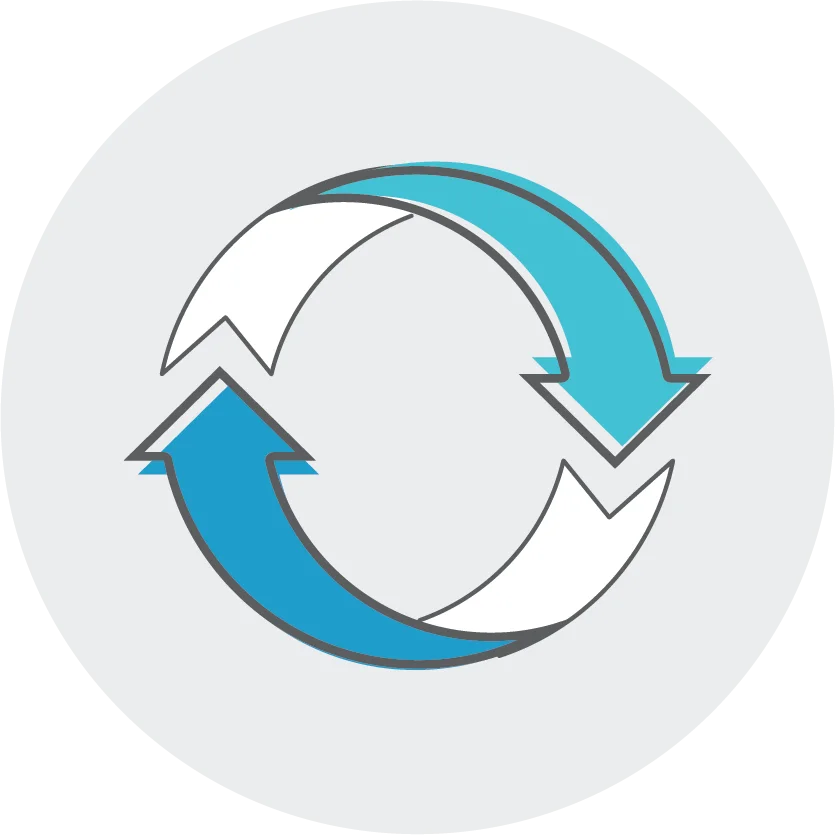We know that for many, the mortgage loan process can be overwhelming and confusing. Don’t worry! With the right information, preparation and an expert loan officer, the loan process can be quite easy and straightforward. From submitting your loan application until the time you close on your dream home, our team of seasoned mortgage professionals will be by your side, guiding you through every step in the process.
Here’s a detailed explanation of the steps in the home loan process, and what you can expect in each phase of your mortgage loan:
Step 1: Pre-Qualification
“How much house can I afford to purchase,” is often one of the first questions we hear when talking to a new client. While much depends on your personal financial situation and goals, taking the first step to get pre-qualified for a mortgage will help you answer that question. When you get pre-qualified, you’ll work with a licensed loan officer to establish a price range for your new home. Based on this price point, you’ll receive an estimate of what your monthly mortgage payments may be. Your loan officer will also explain the different loan programs and down payment options that you may have. At the end of the pre-qualification process your loan officer will issue you a pre-qualification letter.
With your pre-qualification letter in hand, you can begin the house hunting process knowing how much house you can afford to purchase.
Step 2: House Hunting
A good real estate agent is an integral part of the house hunting process. Not only will they be able to show you homes that meet your search criteria in your price point, but they’ll also be able to provide insight about the location, neighborhood, schools and more. Once you find your dream home, your real estate agent can also help you negotiate purchase price and sale terms and write your purchase contract.
Once your offer has been accepted by a home seller, you are considered to be “under contract.” Now it’s time to get to work and prepare to close on your home. Before you officially, “close” on your home loan, there are few more steps in the mortgage process.
Step 3: Submitting a Full Loan Application
The next step in the mortgage process, once you’re under contract, is submitting a full loan application. The loan application will thoroughly document information about your financial situation (including all assets, liabilities, your credit profile), the home that you wish to purchase, and any co-borrowers that will be purchasing the home with you. You should also begin the process of gathering all of the necessary paperwork to secure the financing of your loan. All of the information provided in your loan application will be used to evaluate your ability to repay your mortgage.
At this phase of the mortgage application process you’ll also be working with your loan officer to select the right mortgage product and down payment amount. Once you’ve selected the right mortgage program and down payment amount for your needs, you’ll want to consider locking in your interest rate. It’s important to remember that interest rates fluctuate based on market conditions throughout the day. With a mortgage rate lock, you’re protected from any changes in the market that could cause rates to increase. While there’s no specific timeframe in the mortgage process where you have to lock your loan, if you have a favorable mortgage rate that meets your financial objectives, you should lock it.
In addition to getting your rate locked, your lender will also provide you with a loan estimate based on the loan program and terms that you’ve discussed. The loan estimate is designed to help you better understand the terms of your mortgage; it lays out the loan terms, the loan amount, interest rate, fees, closing costs, estimated taxes, insurance, and monthly principal and interest payments. It’s important to review your loan estimate carefully and discuss any questions or concerns with your Mortgage Banker. There shouldn’t be much difference between the loan estimate you get at the beginning of the home loan process and the closing disclosure.
After you’ve reviewed your loan estimate and initial disclosures, your file will move to processing.
Step 4: Application Processing
Purchasing a new home, or refinancing, takes a fair amount of coordination. To help you close your mortgage loan successfully, several different entities are involved in the financing process. The Loan Processor is the person responsible for coordinating all the necessary documentation for your mortgage transaction, including ordering your appraisal. An appraisal is performed by an independent third party and will assess your new home’s current market value – to determine if the value of the home covers the loan amount.
Your processor will be aggregating all of the required documentation and reviewing the information in your loan file to make sure that all of the requirements of your loan program are met. Your processor may ask for additional documentation pertaining to your financial situation as they prepare to submit your loan application to the underwriting team. To avoid delays, it’s important to respond to these inquiries as soon as possible.
Once all the documentation has been collected and verified by your processor, it’ll be sent to underwriting for the next step in the home loan journey.
Step 5: Underwriting
The underwriter is the key decision maker in the loan process – they’ll be checking to ensure that you (the borrower) and the property you wish to purchase, or refinance, meet the eligibility requirements for the loan product. It’s their job to determine, based on the information that’s submitted, that you have the capability to be able to repay your loan. After an initial review of your file, the underwriter will do one of three things:
- Issue a “Conditional Approval” – You’ll most likely receive questions or requests for additional information (known as conditions) during the underwriting process. Conditions vary based on your personal financial situation, but common requests are additional pay stubs, more tax returns, or a letter of explanation for a late or missed payment. Once all of the conditions from the underwriter have been satisfied, you will be issued a Clear to Close and your closing date for your purchase or refinance will be scheduled.
- Issue a “Clear to Close”: It’s rare that a file will be issued a clear to close upon first submission. Clear to Close means that your home loan has been approved and you’re ready to move to closing. Typically, an underwriter will have a few more questions after an initial review of the file.
- Deny the File – It’s rare that an underwriter would deny a loan file. Rest assured, in most cases issues/discrepancies with the loan terms are identified and can be worked out with your Mortgage Banker before your file is ever submitted to underwriting. Occasionally, an Underwriter may need to deny a file that doesn’t meet the loan program eligibility requirements.
Once your loan has been approved, and a “Clear to Close” has been issued, your home mortgage will move into the closing phase of the process.
Step 6: Closing
Once your file has been issued a “clear to close”, your loan will move into the closing department. During this final step of the home loan process, the closing department will be working to prepare your final loan documents and submit final items to your title company and/or closing attorney depending on the laws in your state.
One of the first things that will happen as your file is prepared for closing day, is preparation of the Closing Disclosure. The closing disclosure is also referred to and known as the CD. The CD is a 5-page document that outlines the specific terms of your loan, including how much you are paying to obtain your mortgage and buy your house. As a rule, the CD must be delivered at least three days before your scheduled closing date to give you an adequate amount of time to review your loan terms. The CD should be carefully reviewed for accuracy to ensure that you fully understand the terms of your loan. Typically, your Loan Officer will be reviewing this document with you. They can help to answer any questions that you might have about your loan terms.
Once the final loan documents have been prepared, it’s time for closing day. There are two primary things that will happen during your loan closing. First, you will sign the legal agreements between you, the lender and the seller, to transfer ownership and agree to the terms and conditions of the sale. Second, you’ll pay any fees and closing costs that you’ve agreed to pay upfront as part of your mortgage terms. Once all final paperwork has been signed and money transfers have been completed, you’re officially a homeowner! The keys are all yours – time to celebrate!
Have Questions About the Process of Getting a Loan? Mutual of Omaha Mortgage Has Answers
You don’t have to complete the home loan application process alone. Our experienced team can assist you throughout all the steps so you feel confident in your choices.
Read our article Different Types of Mortgage Loans – A Comparative Guide to learn about various options or call 1-800-24-RATES to talk to a loan officer.











